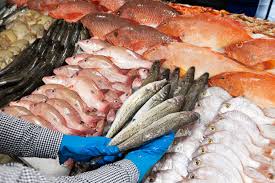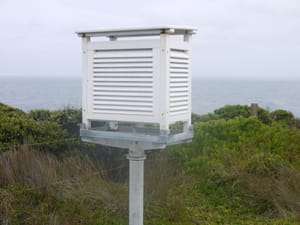Restaurants, pubs and takeaways have a year to fall into line making sure any seafood they sell is labelled either as Australian, imported or of mixed origin.
New laws that came into effect at the start of July will bring the hospitality industry up to speed with retailers that have been labelling fish and shellfish with their origins since 2006.
Customers will soon see A for "Australian", I for "imported" or M for "mixed origin" under the "AIM" across the region, as the likes of The Fish Creek Hotel and others start moving towards a similar labelling system to grocery stores.
Manager of the Fishy Pub, Michael Willcocks, said, “I think when people go out in 2025 they aren't just going out for a meal they are heading out for an experience. Being so close to Wilsons Prom and the South Gippsland beaches we see our fair share of visitors from around the country and abroad and they are always eager to try local produce and we've certainly seen an uptick in people asking whether our fish is fresh or frozen.”
He added, “Traceability is becoming as important for seafood as it has been for other proteins on the menu. Pubs and restaurants have long promoted beef, lamb and pork by brand name and the origin on their menus and I can see seafood catching up fast.”
Noting that more than 60 percent of seafood in Australia is imported, Seafood Industry Australia chief executive Veronica Papacosta told the ABC “There is a real assumption made by a lot of Australians that when they're sitting down to a seafood meal in a food service operation, that it is Australian because there's an absence of labelling.”
Port Welshpool fisherman and managing director of Fishermen Direct Grant Leeworthy welcomed the new laws saying, “ The consumers want it, they want to know where it comes from, they want it to be local and sustainable.
“They want to know child labour or slave labour isn’t involved, we've got standards as an employer that we treat our crew well”, he added.
On the question of the extra cost of Australian caught fish over much of the imported product we see on supermarket shelves, Mr Leeworthy explained, “Our fish prices haven't been going up with CPI, let alone anything else.
We'd like to see just CPI increases going back to the fishermen and we think it's a cost the large majority of the Australian consumers will be willing to pay when the labelling is clear it’s local, sustainable Australian seafood.”
Adjusting to the new laws will be a process. Ms Papacosta of Seafood Industry Australia will be working with the Primary Industries Department to help businesses navigate the changes.
"When you're running a food services business, it's really busy, it's sometimes seven days a week, so you don't have a lot of time to think about upgrades or optimising what you're doing," she said.
To help businesses along the way, the year-long transition period will include a final four-week consultation.
Finally, landlord Michael was keen to point out that the Fishy goes above and beyond to offer that local experience stating that, “Our menus change with the seasons, making the most of what’s fresh and available to our chefs. We're lucky to call Gippsland home. It’s where some of the country’s best produce comes from.”






